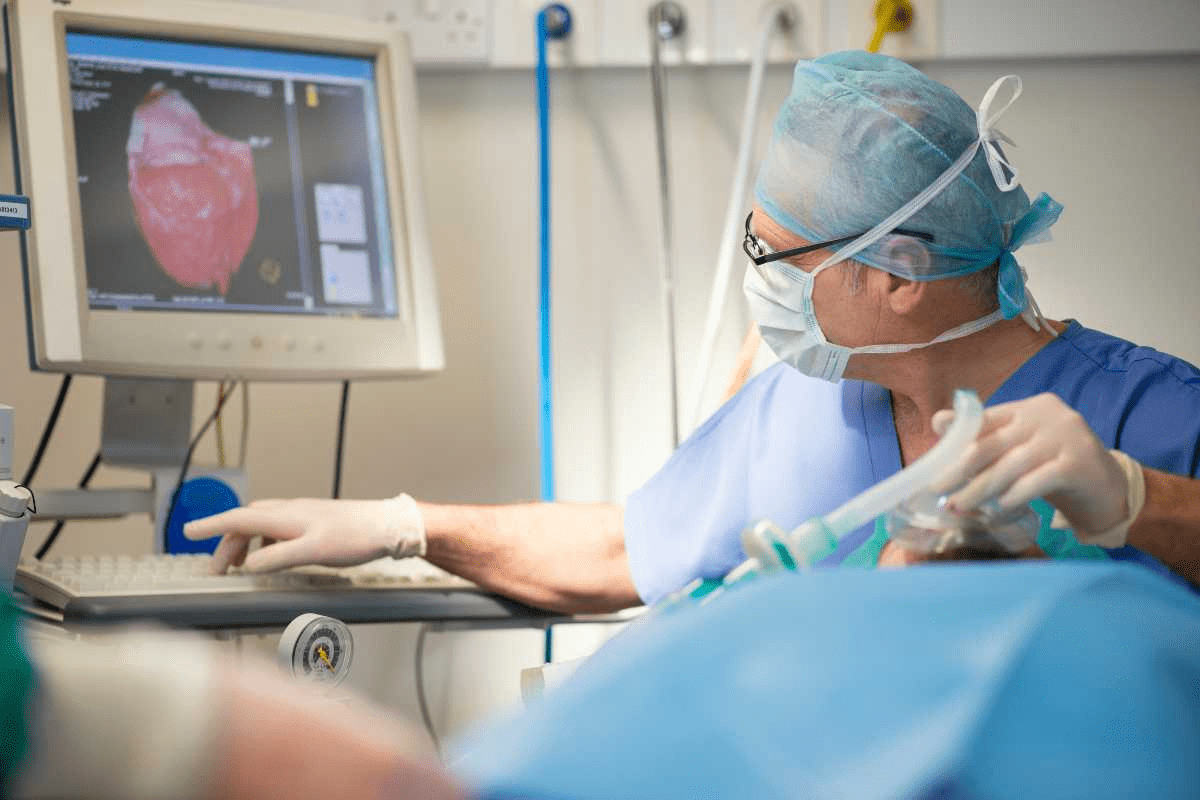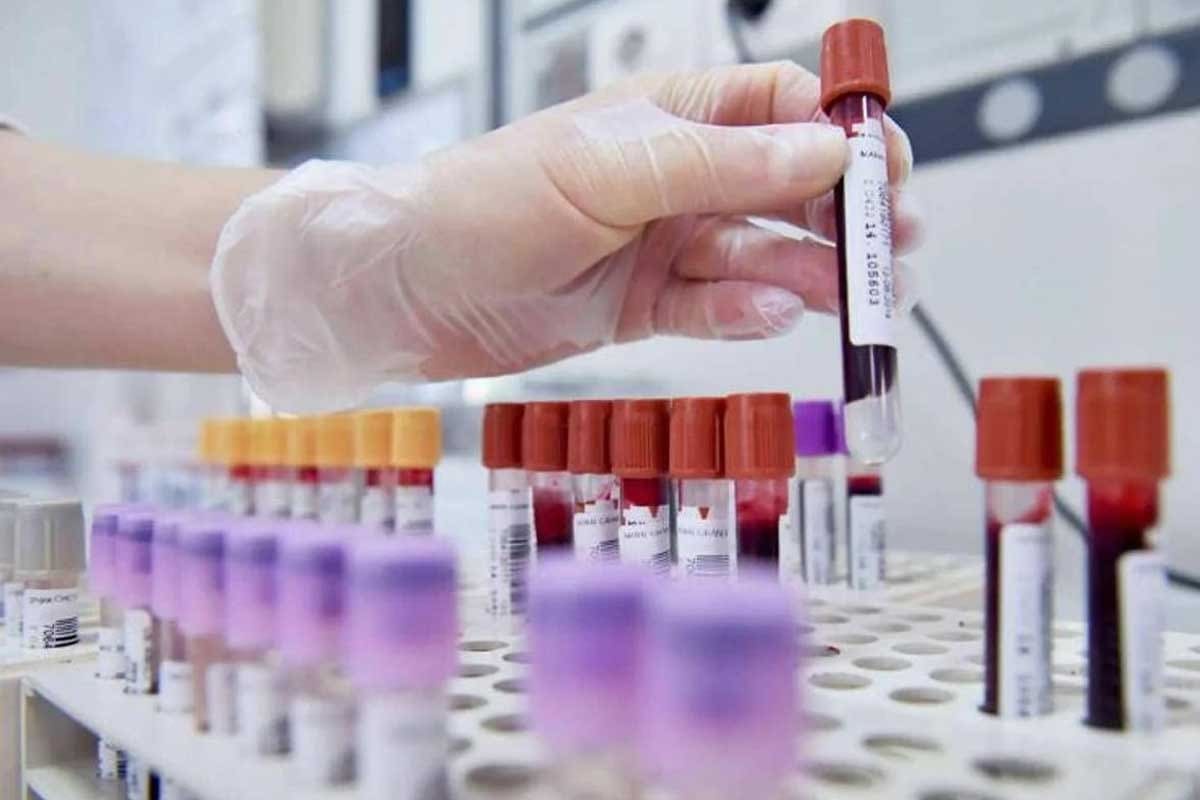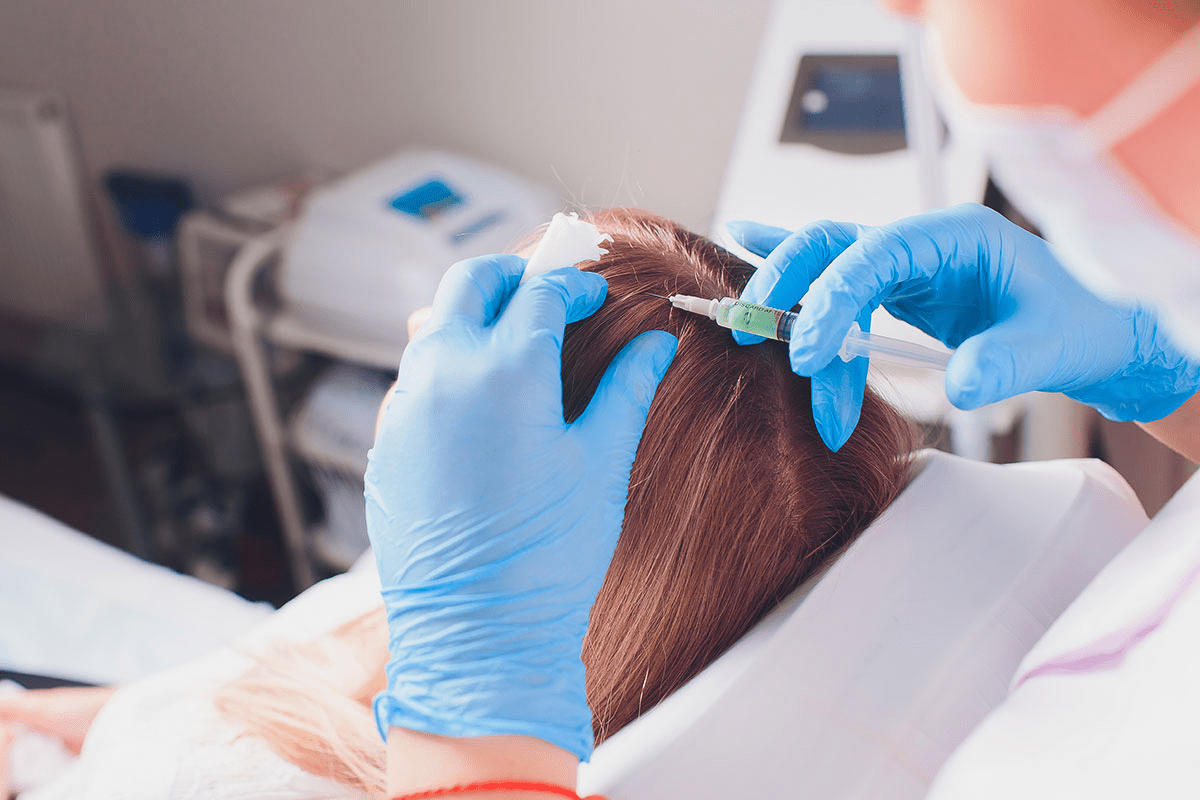Last Updated on November 26, 2025 by Bilal Hasdemir
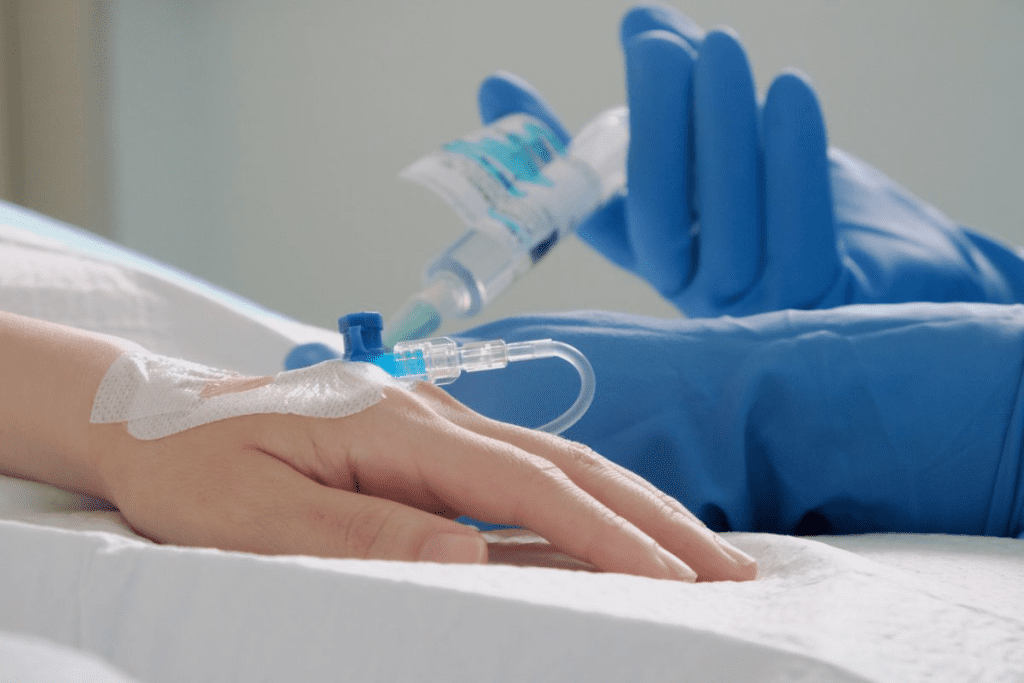
Nearly 70% of cancer patients get adjuvant therapy to stop cancer from coming back. But how can you tell if it’s working? Knowing if adjuvant chemo is effective is key for treating cancer.
After adjuvant chemotherapy, patients often ask if the treatment is effective. Signs that show adjuvant therapy benefits include smaller tumors, better survival rates, and better health overall.
Key Takeaways
- Understanding adjuvant chemotherapy success is vital for cancer patients.
- Adjuvant chemo effectiveness can be measured through regular check-ups.
- Cancer treatment outcomes improve with effective adjuvant therapy.
- Patients should discuss adjuvant therapy benefits with their healthcare provider.
- Regular monitoring helps track the progress of adjuvant chemotherapy.
What Is Adjuvant Chemotherapy and Its Purpose
Adjuvant chemotherapy is key for cancer patients. It helps lower the chance of cancer coming back. This treatment is given after the main therapy to reduce recurrence risk.
Definition and Goals of Adjuvant Treatment
Adjuvant chemotherapy is a treatment given after the main therapy, like surgery. Its main goals are to:
- Get rid of any cancer cells left after the main treatment.
- Lowering the chance of cancer coming back helps patients live longer.
Even after successful main treatment, tiny cancer cells might stay. Adjuvant chemotherapy targets these cells to stop cancer from coming back.
Differences Between Adjuvant and Neoadjuvant Chemotherapy
Chemotherapy is used at different times in cancer treatment. This makes adjuvant and neoadjuvant chemotherapy different. Neoadjuvant chemotherapy is given before the main treatment to make tumors smaller. Adjuvant chemotherapy is given after to get rid of any cancer cells left.
| Treatment Type | Timing | Purpose |
| Neoadjuvant Chemotherapy | Before primary treatment | Shrink tumors to facilitate surgical removal |
| Adjuvant Chemotherapy | After primary treatment | Eliminate remaining cancer cells to prevent recurrence |
Knowing the difference between these treatments is important for patients to understand their treatment plans.
The Challenge of Measuring Adjuvant Chemotherapy Success

Measuring the success of adjuvant chemotherapy is tough. This is because its main goal is to get rid of any cancer cells left after the first treatment. But, it’s not easy to see if it’s working right away.
Why Success Is Not Immediately Visible
Adjuvant chemotherapy targets tiny cancer cells left after surgery. These cells are too small to see with normal imaging. So, it’s hard to tell if the treatment is working at first.
Monitoring adjuvant chemotherapy’s effectiveness needs patience and a detailed follow-up plan. Doctors use many ways to check if the treatment is working. This includes regular visits, lab tests, and imaging studies.
Setting Realistic Expectations for Outcomes
It’s important for patients to have realistic expectations about adjuvant chemotherapy’s results. The treatment’s success depends on many things. These include the cancer type and stage, the patient’s health, and the chemotherapy used.
Knowing these factors and talking openly with doctors helps patients deal with adjuvant chemotherapy’s challenges. By having realistic hopes, patients can handle the treatment better.
Immediate Post-Treatment Evaluation Methods
After treatment, checking how well it worked is key. This check-up uses many methods to see if the treatment was effective.
Physical Examination Findings
A detailed physical examination is a main way to see if treatment was successful. Doctors look for signs of cancer, like changes in tumor size or new masses.
This check can quickly show how the patient is doing after treatment. For example, if tumors shrink or symptoms go away, it means the treatment worked well.
Distinguishing Between Side Effects and Treatment Response
Telling apart side effects of treatment and how well the treatment worked is very important. Side effects can look like treatment failure or the other way around.
Common side effects of adjuvant chemotherapy include:
- Fatigue
- Nausea and vomiting
- Hair loss
- Changes in appetite
Doctors must carefully look at these to see if the treatment is working. Knowing the patient’s symptoms and medical history helps make this decision.
By using physical exams and other methods, doctors can fully understand the treatment’s success.
Blood Tests and Laboratory Markers for Monitoring
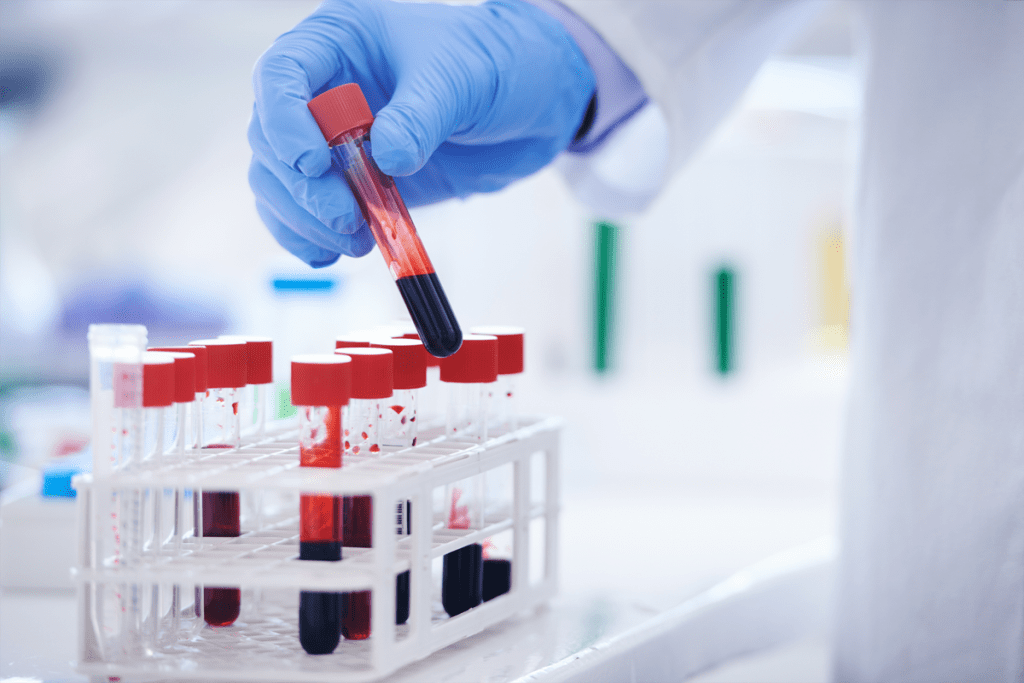
Blood tests and laboratory markers are key in checking if adjuvant chemotherapy is working. They give important info on how the body reacts to treatment. This helps doctors make better choices for future care.
Complete Blood Count and Chemistry Panels
A complete blood count (CBC) checks different parts of the blood. It looks at red and white blood cells and platelets. This test shows if the body can fight off infections and recover from chemo.
Chemistry panels, on the other hand, check how well organs like the kidneys and liver work. These tests are vital for watching out for chemo’s side effects. They make sure the treatment isn’t harming the patient’s health too much.
Tumor Markers: CA-125, CEA, PSA, and Others
Tumor markers are substances found in higher amounts in some cancers. CA-125 is for ovarian cancer, CEA for colorectal, and PSA for prostate. These markers help track how well chemo is working and if cancer might come back.
- CA-125 is used mainly for ovarian cancer.
- CEA is often checked in patients with colorectal cancer.
- PSA levels are watched in men with prostate cancer.
Limitations of Blood Testing in Adjuvant Settings
Even though blood tests and tumor markers are helpful, they have their limits. They can’t alone show if cancer has come back or if treatment is working. Imaging studies and clinical assessments are also needed for a full check-up.
It’s important to know that normal tumor marker levels don’t always mean cancer is gone. And high levels don’t always mean it’s back. Doctors look at these test results along with the patient’s overall health picture.
Imaging Studies in Post-Adjuvant Chemo Surveillance
Imaging studies are key in checking how well cancer treatment works after chemotherapy. They help doctors see if the cancer has come back or if the treatment was effective.
CT Scans, MRIs, and Ultrasounds
Many imaging tools are used to watch over patients after chemotherapy. CT scans help see how big tumors are and if they’ve changed. MRIs show soft tissues well, which is great for some cancers. Ultrasounds check organs like the liver and kidneys for cancer signs.
Which imaging tool is best depends on the cancer type, where it is, and the patient’s needs. For example, MRI is best for brain or spinal cord cancers because it shows soft tissues clearly.
PET Scans for Detecting Metabolic Activity
PET (Positron Emission Tomography) scans are vital too. They find cancer by looking at how active cells are, even before they show up on other scans. This is helpful for finding cancer early.
PET scans work with CT scans (PET-CT) to give both how active and where the cancer is. This helps doctors know how well the treatment is working.
Recommended Frequency of Imaging After Treatment
How often imaging is done after chemotherapy changes based on the cancer type and how advanced it is. It’s usually done at set times during follow-up, which can last from months to years after treatment ends.
| Cancer Type | Imaging Modality | Typical Follow-Up Frequency |
| Breast Cancer | Mammogram, possibly MRI | Every 6-12 months |
| Colorectal Cancer | CT scans | Every 6-12 months for 2-3 years |
| Lymphoma | PET-CT scans | Every 6-12 months for 2-3 years |
It’s important for patients to stick to their follow-up schedule. This helps catch any cancer that might come back early. Regular scans, along with doctor visits and other tests, help keep track of how well treatment is working.
Understanding Pathological Complete Response
Pathological complete response (pCR) is key in checking if adjuvant chemotherapy works. It means no cancer cells are found in the breast and lymph nodes after treatment. This is seen through a detailed check after surgery.
Definition and Measurement Methods
Getting to pCR means all cancer cells are gone from the tumor and lymph nodes. Doctors check for cancer cells in the removed tissue. This is how they measure pCR.
Methods of measuring pCR include:
- Histopathological examination of the surgical specimen
- Assessment of tumor bed and lymph nodes
- Use of standardized pathological reporting systems
A study in the Journal of Clinical Oncology shows why pCR matters. It found that no cancer cells left means better long-term health.
Correlation Between PCR and Long-term Outcomes
Reaching pCR means better health in the long run for many cancers. Studies show people with pCR live longer and have fewer cancer returns. This is compared to those without pCR.
“The achievement of a pathological complete response is a powerful predictor of long-term survival and reduced risk of recurrence in many cancer types.” –
The link between pCR and long-term health changes with different cancers. For example, in HER2-positive and triple-negative breast cancers, pCR means much better survival rates.
| Cancer Type | Correlation Between pCR and Outcomes |
| HER2-positive Breast Cancer | Strong correlation with improved overall survival |
| Triple-negative Breast Cancer | Significant association with disease-free survival |
| Hormone Receptor-positive Breast Cancer | Moderate correlation with long-term outcomes |
In summary, knowing about pCR is vital for seeing how well adjuvant chemotherapy works. The link between pCR and better health shows its value in cancer treatment.
Timeframes for Evaluating Adjuvant Chemotherapy Success
Checking how well adjuvant chemotherapy works is a detailed process. It looks at how patients do at different times. Knowing these times helps see if the treatment is working and guides future care.
Short-term Indicators (First 6 Months)
In the first six months after treatment, several signs show if it’s working. These include:
- Physical examination findings: Seeing if the tumor gets smaller or symptoms improve.
- Blood tests and laboratory markers: Watching tumor markers and lab tests to see how the body reacts.
- Imaging studies: Using CT scans, MRIs, and PET scans to see how the tumor responds to the treatment.
These signs are key for checking if the treatment is working early on. They help spot any problems that might need a change in treatment.
Medium-term Evaluation (1-3 Years)
Between one to three years after treatment, more detailed checks are done. During this time:
- Disease-free survival is watched closely to see if the treatment stopped cancer from coming back.
- Regular follow-up appointments are set to keep track of how the patient is doing and catch any early signs of cancer coming back.
- Imaging studies continue to be a key tool for checking the patient’s health and spotting any changes.
This time is important for seeing how well the treatment has worked. It helps make any needed changes to the follow-up care plan.
Long-term Success Measures (5+ Years)
Checking how well adjuvant chemotherapy works long-term is done five or more years after treatment. Key measures include:
| Measure | Description | Significance |
| Overall Survival | The percentage of patients surviving after treatment | Shows if the treatment worked well in the long run |
| Disease-Free Survival | The percentage of patients without cancer recurrence | Shows if the treatment stopped cancer from coming back |
| Recurrence Rates | The rate at which cancer recurs after treatment | Helps understand how well the treatment worked in the long term |
Long-term follow-up is key to fully understand how well adjuvant chemotherapy worked. It helps guide future treatment plans.
Statistical Measures of Adjuvant Chemotherapy Success
Statistical measures are key in showing how well adjuvant chemotherapy works for cancer patients. They give insights into the treatment’s success. This helps doctors make better choices for their patients.
Disease-Free Survival and Recurrence Rates
Disease-free survival (DFS) is a key measure for adjuvant chemotherapy success. It shows how long a patient stays cancer-free after treatment. Recurrence rates tell us how many patients get cancer again within a certain time. These numbers are vital for seeing if chemotherapy stops cancer from coming back.
Research shows adjuvant chemotherapy can greatly boost DFS and lower recurrence rates in many cancers. For example, a study on breast cancer patients found chemotherapy could increase DFS by up to 20% compared to those not treated.
Overall Survival Benefits
Overall survival (OS) is another important measure. It shows how many patients live for a certain time after diagnosis or treatment. Adjuvant chemotherapy has been proven to increase OS in many cancers by cutting down cancer-related deaths.
Studies on OS benefits of adjuvant chemotherapy are often done in clinical trials. These trials compare OS rates between treated and untreated patients. They give us valuable info on chemotherapy’s long-term benefits.
Relative and Absolute Risk Reduction
Relative risk reduction (RRR) and absolute risk reduction (ARR) are two ways to measure adjuvant chemotherapy’s benefits. RRR shows the percentage drop in cancer recurrence or death risk. ARR tells us the actual risk difference between treated and untreated patients.
It’s important to understand both RRR and ARR. RRR gives a relative view of treatment benefits. But ARR shows the actual benefit in real terms.
Factors Influencing Adjuvant Treatment Outcomes
Adjuvant treatment results change a lot based on several important factors. These include the cancer’s type and stage, and the patient’s health. Knowing these helps doctors create better treatment plans. It also helps patients understand what to expect.
Cancer Type, Stage, and Grade
The type, stage, and grade of cancer are key. They decide how well adjuvant chemotherapy works. For example, some breast cancers with hormone receptors do better with treatment.
The cancer’s stage at diagnosis matters too. Early stages usually have better results. The tumor’s grade, or how much it looks like normal cells, also affects treatment.
Genetic and Molecular Biomarkers
Genetic and molecular biomarkers are very important. They help figure out if adjuvant chemotherapy will work. For example, BRCA1 and BRCA2 mutations in breast and ovarian cancers change treatment plans.
Molecular tests on tumors show what treatments will work best. This makes treatment plans more personal.
Patient-Specific Variables Affecting Success
Things like overall health, age, and genetics also matter a lot. Older or sicker patients might not handle chemotherapy as well. Genetic differences can change how well drugs work and how toxic they are.
Doctors can guess how well treatment will work by looking at these factors. This helps them make the best choices for patient care.
Recognizing Signs That Adjuvant Chemo May Not Have Worked
It’s important for patients to know if adjuvant chemo is working. This treatment aims to kill any cancer cells left after the main treatment. But, it can be hard to tell if it’s working.
Warning Signs of Recurrence or Progression
There are signs that show adjuvant chemo might not be working. These include:
- New or worsening symptoms: Pain, fatigue, or other symptoms that were previously managed or absent.
- Changes in imaging studies: CT scans, MRIs, or PET scans showing signs of tumor growth or new tumors.
- Elevated tumor markers: Blood tests indicating rising levels of tumor markers such as CA-125, CEA, or PSA.
Patients should tell their healthcare provider about any new or concerning symptoms right away.
Next Steps and Alternative Treatment Options
If adjuvant chemo doesn’t work, doctors will talk about what to do next. They might suggest:
| Treatment Option | Description |
| Targeted Therapy | Treatments that target specific cancer cell characteristics. |
| Immunotherapy | Therapies that enhance the body’s immune response against cancer. |
| Hormone Therapy | Treatments that block or reduce hormone production to slow cancer growth. |
| Clinical Trials | Research studies evaluating new and innovative treatments. |
Patients should talk to their healthcare team about what’s best for them.
Knowing when adjuvant chemo might not work and looking at other options helps patients make good choices about their care.
Follow-Up Protocols After Adjuvant Chemotherapy
After adjuvant chemotherapy, follow-up care is key. It helps catch any cancer signs early. This care is tailored to each patient’s cancer type and stage.
Standard Surveillance Schedules by Cancer Type
The timing and type of follow-up visits change with cancer type. For example, breast cancer patients might see their doctors more often in the first years. Colon cancer patients might have a different schedule.
| Cancer Type | Follow-Up Frequency | Typical Surveillance Methods |
| Breast Cancer | Every 3-6 months for the first 2-3 years | Mammograms, Clinical Exams |
| Colon Cancer | Every 3-6 months for the first 3 years | CEA blood tests, Colonoscopy, CT scans |
| Lung Cancer | Every 3-6 months for the first 2-3 years | CT scans, PET scans |
Knowing your cancer’s follow-up schedule is vital. It helps you manage your care well.
What to Expect at Follow-Up Appointments
Follow-up visits after chemotherapy include physical checks, lab tests, and imaging. These are key for watching your health and catching problems early.
Your healthcare team will check your overall health and look for cancer signs. They’ll also talk about any side effects or challenges. This is a chance to get help and advice on managing them.
Following the recommended follow-up plans helps catch problems early. This proactive care is a big part of cancer treatment.
Managing the Psychological Aspects of Monitoring
Monitoring after adjuvant chemotherapy is a journey filled with uncertainty and anxiety. Patients wait anxiously for test and scan results. It’s key to manage these feelings to stay well.
Coping with Uncertainty and “Scanxiety”
Uncertainty is a big worry for many. The fear of cancer coming back, or “scanxiety,” is hard to handle. It’s vital to find ways to cope with these feelings. Mindfulness, meditation, and support groups can offer comfort and lower anxiety.
As one patient shared,
“The wait between scans is the hardest part. But knowing I have a support system makes all the difference.”
This shows how important it is to have people to turn to when things get tough.
Effective Communication with Your Healthcare Team
Talking openly with healthcare providers is key during monitoring. Patients should ask questions and share their worries. Open dialogue can ease fears and ensure support.
A clear follow-up plan, with regular check-ins, can also ease anxiety. Knowing what to expect during these visits can help reduce uncertainty.
By focusing on the mental side of monitoring, patients can handle the challenges of post-adjuvant chemotherapy better. This approach shows the value of mental health in cancer care.
Conclusion
Checking how well adjuvant chemotherapy works is key for both patients and doctors. The success of adjuvant chemotherapy depends on many things. These include the type and stage of cancer, and the patient’s health.
Adjuvant therapy offers many benefits. Knowing these helps patients understand their treatment better. Doctors use these benefits to see if the chemotherapy is working well.
Doctors keep an eye on how well adjuvant chemotherapy is working. They do this through regular check-ups and tests. This helps them see if the treatment is helping the patient stay cancer-free.
It’s important for cancer patients to know about adjuvant chemotherapy’s success. Recognizing when treatment is working helps patients stay on track. It also helps them watch for any signs that the cancer might come back.
FAQ
What is adjuvant chemotherapy, and how does it differ from other types of chemotherapy?
Adjuvant chemotherapy is a treatment given after primary therapy, like surgery. It aims to lower the risk of cancer coming back. It’s different from neoadjuvant chemotherapy, which is given before to shrink tumors.
How is the success of adjuvant chemotherapy measured?
Success is checked through physical exams, blood tests, imaging, and complete response in pathology. These methods show if treatment is working to prevent cancer from coming back.
What are the common methods used to evaluate adjuvant chemotherapy effectiveness immediately after treatment?
Right after treatment, doctors use physical exams, blood tests, and imaging to see how well it worked. These help tell apart side effects from actual treatment results.
How often should imaging studies be performed after adjuvant chemotherapy?
Imaging studies’ frequency depends on cancer type, stage, and patient factors. Usually, they’re done every 6-12 months to watch for any signs of cancer coming back.
What is pathological complete response, and how is it measured?
Pathological complete response means no cancer cells are found in the tumor after treatment. It’s checked by examining tissue samples, showing how well chemotherapy worked.
What are the signs that may indicate adjuvant chemotherapy has not worked?
Signs like new symptoms, changes in imaging, or rising tumor markers might mean treatment failed. It’s important to talk to your doctor about any concerns.
How long does it take to evaluate the long-term success of adjuvant chemotherapy?
Long-term success, like staying cancer-free and overall survival, is checked after 5 years or more after treatment.
What factors influence the outcomes of adjuvant chemotherapy?
Outcomes depend on cancer type, stage, and grade, plus genetic and molecular markers. Patient factors like age and health also play a role.
What can patients expect at follow-up appointments after adjuvant chemotherapy?
At follow-ups, patients get regular checks, including physical exams, blood tests, and imaging. These help watch for cancer coming back and manage treatment side effects.
How can patients cope with the uncertainty and anxiety associated with monitoring after adjuvant chemotherapy?
Talking openly with your healthcare team, getting support from loved ones, and managing stress can help with uncertainty and anxiety after treatment.
What are the benefits of adjuvant chemotherapy in improving survival rates?
Adjuvant chemotherapy can boost survival by cutting down cancer recurrence risk. Benefits vary based on cancer type, stage, and patient factors.
How does adjuvant chemotherapy impact disease-free survival and recurrence rates?
It can improve staying cancer-free and lower recurrence rates by getting rid of tiny cancer cells left after primary treatment.
References
- Kotani, D., et al. (2023). Molecular residual disease and efficacy of adjuvant chemotherapy. Nature Medicine, 29, 353“361. https://www.nature.com/articles/s41591-022-02115-4


